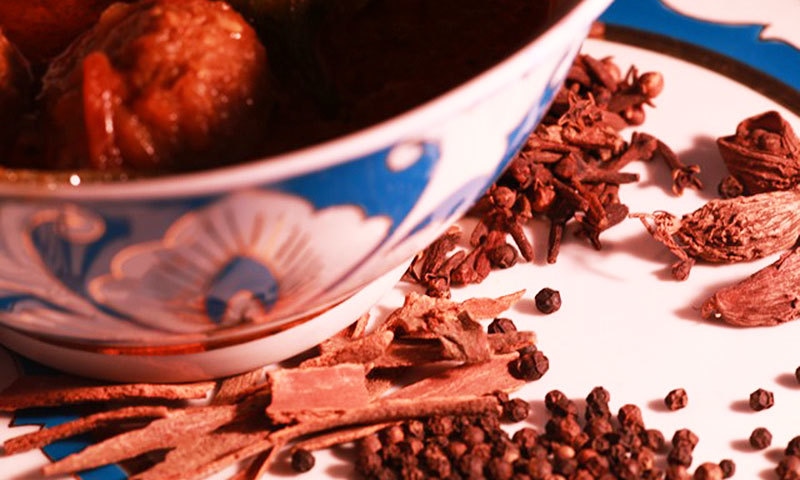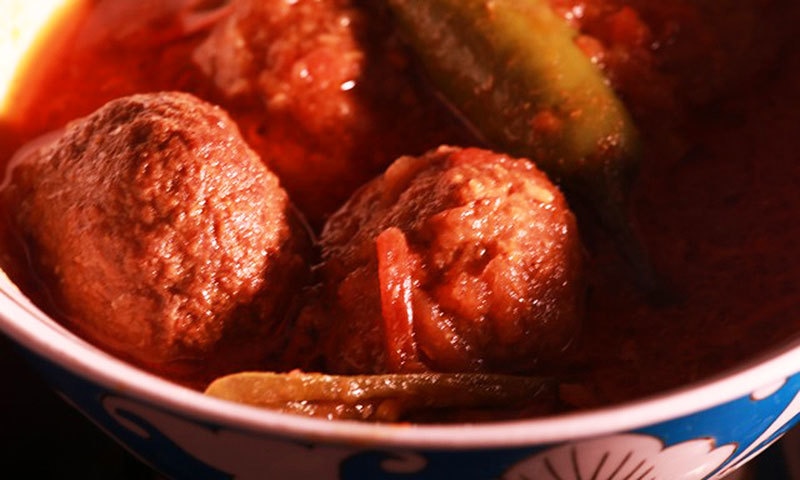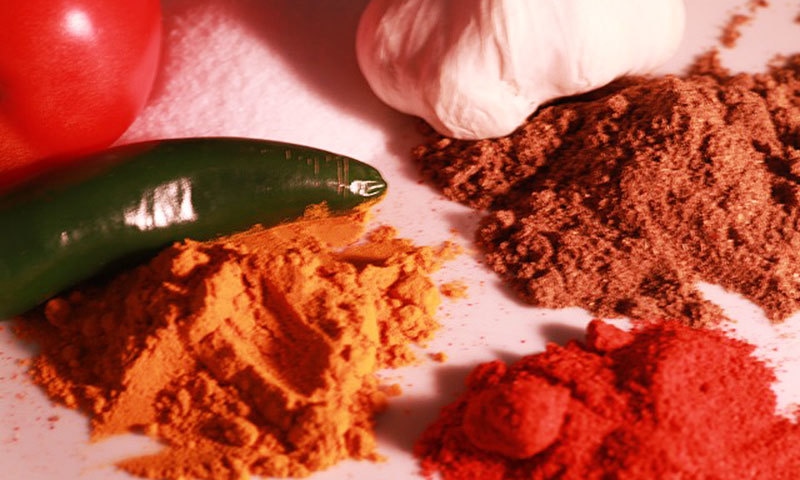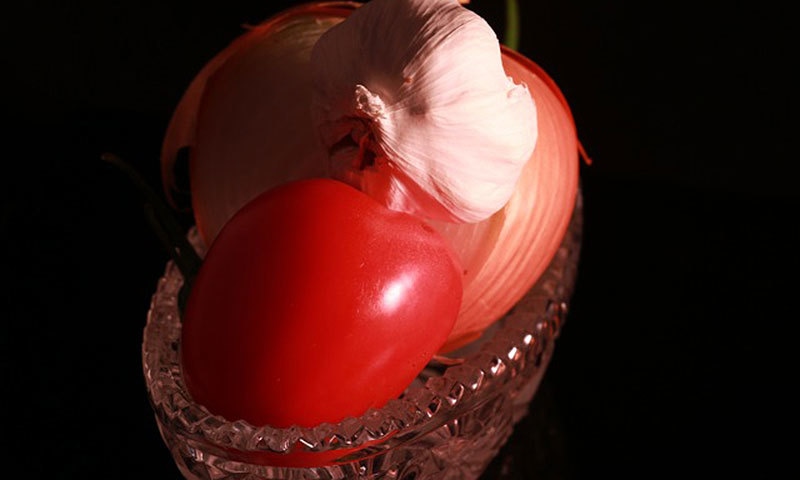I recently read an apt description of the kofta in the cookbook, Jerusalem: "There are hundreds of varieties of meatballs – (kofta in Arabic), each with its own unique heritage and specific preparation technique. In [most] cultures the difference between kebab and kofta can cause confusion to an outsider.
Both are meatballs [historically] made from ground lamb, veal, beef, or a mixture of all. Kebab is sold on the street or kebab shops, often served alongside pita [naan, roti], chopped salad, onions and tahini sauce [raita]; kebab for the most part is made on skewers, while the kofta is usually handmade. Kofta can be cooked on the stovetop in a curry or masala sauce."
The kofta meat is grinded with mild garam masalas and vegetables, formed into golf ball-sized meatballs, and simmered to tender perfection in a saalan (curry).

Koftas and kebabs
Like the kebab, the arrival of the kofta in the subcontinent can be credited to the Turko-Afghans conquerors in the 11th century.
Similar to the kebab, our desi kofta metamorphosised and became a prodigy of the mitti (soil). The locals adapted the spices to their taste, and the usage of meat or vegetable was guided by the religious practices of the people of the local area, hence the incarnation of the vegetarian kofta.
Historians suggest that the Turkish kebab was simmered in aromatic spicy gravy of the local region, and that’s how the kofta came to be. Rightly so, the dry and fried version of the kofta is termed the kebab, with the exception of Shammi kebab, which takes an entirely different method and ingredients to cook, unless one is making the Nargisi kofta.
In an article titled Potted histories: Scotch eggs, published in The Telegraph, Leah Hyslop writes of the Scotch eggs:
"Annette Hope, in her book A Caledonian Feast, suggests the dish may, like kedgeree or mulligatawny soup, be an export from the British Raj: the Indian dish nargisi kofta has certain similarities, though it seems odd that all the spices were lost in translation."
Pushpesh Pant, the famous food critic and historian, in his article published in The Times of India, titled "Kofta: Great balls of fire", writes the following about the sub-continental kofta: "For special occasions, there is the nargisi kofta, named after the flower nargis (iris) as the kofta cut in half reveals the yellow of a hard boiled egg and has a marked resemblance to the elegant flower. To translate it as subcontinental deviled eggs sounds sacrilegious."
South Asian varieties
Mughaliya kofte in Delhi, Bhopal and Hyderabad are long simmered in a curd-based aromatic gravy that complements their steamy appeal, yet has a pleasant presence of its own.

A true blue-blooded kofta, like a good kebab, has to have a distinct identity. It should be able to hold its own against all other contenders in the spread – qorma, kaliya, salan and more. It's not just a matter of shape but texture and taste.
Chui-mui ke kofte from Awadh tend to crumble when you try to scoop out a bite-sized portion, making you marvel at how such a delicate thing endured the ordeal of cooking. The dish that goes by the name of Kashmiri kofta isn't round in shape but looks like a mini-sausage. It has no gravy, bar the tasty oil that floats on top in which it cooks.
The vegetarians prepare the kofta to match the meat-eaters by pressing into service lauki (bottle gourd), kutcha kela (raw banana), paneer (cottage cheese), aloo-palak (potato spinach) among others. A favourite is the aloo bokhara (plum) kofta that encrusts a pitted dried plum. Some chefs with flair pack the plum with an almond as well.
However, what is indisputable is that Maulana Rashidul Khairi includes kofta pulav as a delicacy in his work Bid-e-Zafar, a chronicle of the court of the last Mughal emperor, Bahadur Shah Zafar.
My mother used to make beetroot kofta, the depth and texture of which was similar to that of the beef kofta.
So when it was time for me to make the kofta, I turned to my mother’s recipe book, making some changes to the original recipe to suit my taste, and needless to say the end result was finger licking good.
Here it is, from my kitchen to yours.
Ingredients (Kofta)
2 lbs. ground beef
2 small tomatoes
1 ½ small onions
½ tsp. turmeric
1 tsp. cumin
2 green chilli
½ inch piece ginger
3 to 4 cloves garlic
1 tsp. red chilli
1 tsp. coriander powder
1 tsp. garam masala
1 egg
2 to 3 tbsp. whole wheat flour (atta)
½ tsp. baking powder
Salt to taste

Put the above ingredients in a blender and form golf ball-sized kofta.
Ingredients (Gravy)
1 large onion
1 large tomato
2 tbsp. yogurt
2 green chilli
1 tsp. red chilli
½ tsp. turmeric
½ tsp. to 1tsp. cumin seeds
½ tsp. coriander powder
½ tsp. to 1 tsp. garam masala
1 tsp. fresh ginger
1 tsp. fresh garlic
Salt to taste
4 to 6 cloves
8 to 10 peppercorns
1 black cardamom
1 stick cinnamon

Procedure
In ¼ to ½ cup of oil brown onions, add tomatoes and yogurt.
Stir on high heat for a few minutes, and then put in blender.
Pour back in pot, stir and cook on high heat, adding all powder spices, including ginger and garlic.
Cook for a few minutes, adding hot water (eyeballing amount of water).
Let it simmer, then add the kofta and whole garam masala. Continue to let it simmer until the kofta is cooked and the oil separates.
Enjoy with a side of naan.
This article was originally published on Dawn.










